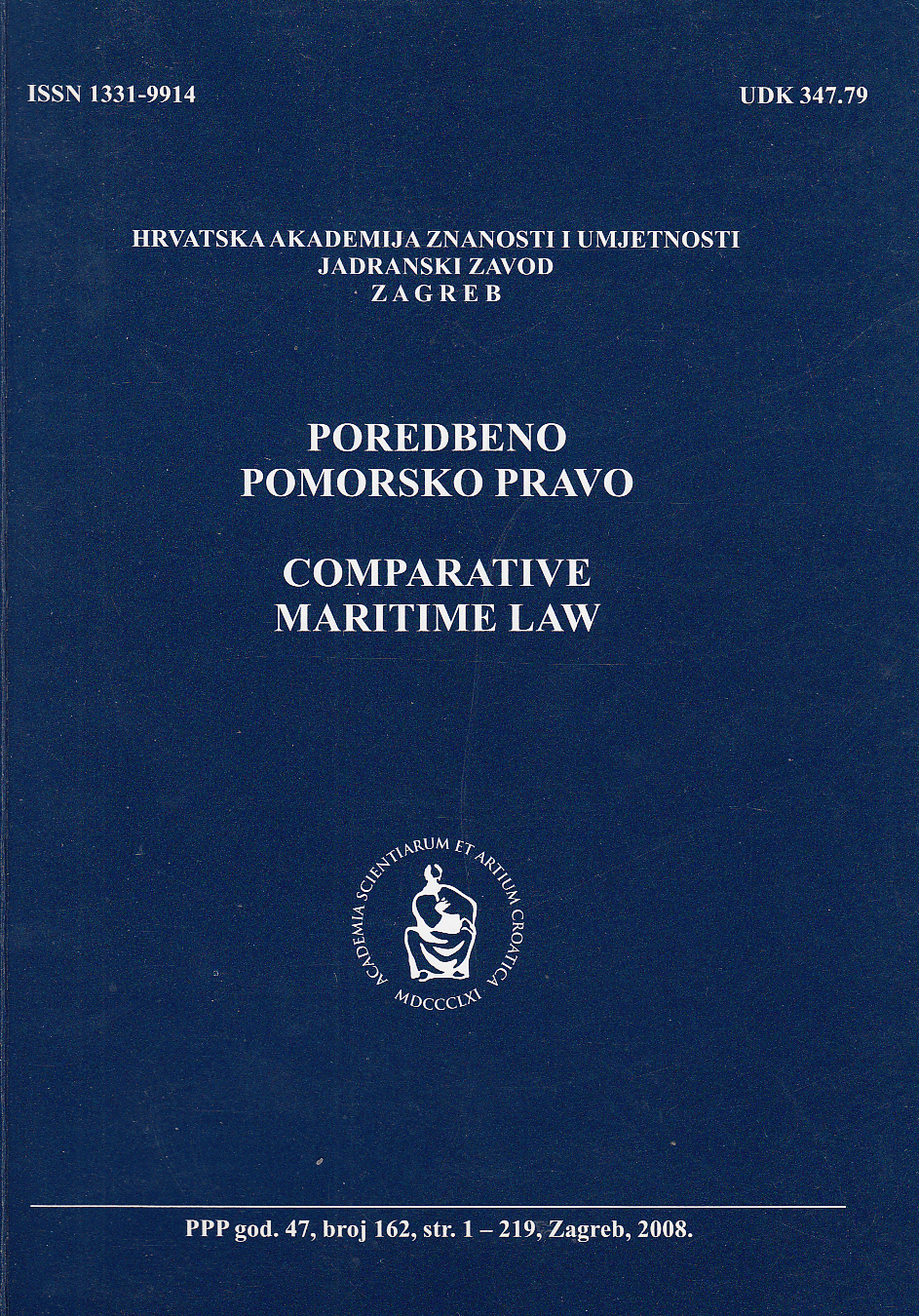Carriage of passengers in Croatia - National legislation and EU law
Carriage of passengers in Croatia - National legislation and EU law
Author(s): Dragan Bolanča, Petra Amižić JelovčićSubject(s): Civil Law, EU-Legislation, Maritime Law, Commercial Law
Published by: Hrvatska akademija znanosti i umjetnosti
Keywords: carriage of passengers by sea; EU law; national legislation; Croatian Maritime Code;carrier's liability;limitation of liability;Athens Convention (1974);1976 PAL Protocol;1990 PAL Protocol;
Summary/Abstract: In the Republic of Croatia the carriage of passengers and luggage by sea is regulated by articles 598-633 of the Croatian Maritime Code (hereafter CMC). In this part Croatia adopted the solutions of the Athens Convention relating to the Carriage of Passengers and their Luggage by Sea, 1974 (PAL, 1974), the London Protocol of 1976 (PAL Prot 1976) and the London Protocol of 1990 (PAL Prot, 1990). The liability of the carrier is based on proved or presumed fault. His liability for the death of or personal injury to a passenger is limited in all cases to 175,000 Special Drawing Rights (hereafter SDRs) per passenger and per carriage. Also the CMC adopts the Convention on Limitation of Liability for Maritime Claims, 1976 /LLMC, 1976) and the Protocol of 1996 (LLMC Prot, 1976). According to these acts, in respect of claims arising on any distinct occasion for loss of life or personal injury to passengers of a ship, liability of the carrier is limited to 175,000 SDRs multiplied by the number of passengers which the ship is authorized to carry according to the ship's certificate. The Protocol of 2002 (PAL Prot, 2002) establishes a new liability regime by introducing two tier liability system and adopting strict liability for death and personal injury claims caused by shipping incidents. It requires compulsory insurance in respect of such liability and allows direct action against insurers. The PAL Protocol (2002) will be ratified by the EU as soon as the main obstacles for its implementation are solved. Since the aim of the RH is to become a member of the EU it is assumed that our country will become a Member State of the PAL Protocol (2002) as well. Before that happens we have to predict legal and economical implications of acceptance of the new convention.
Journal: Poredbeno pomorsko pravo
- Issue Year: 47/2008
- Issue No: 162
- Page Range: 45-57
- Page Count: 13
- Language: English

